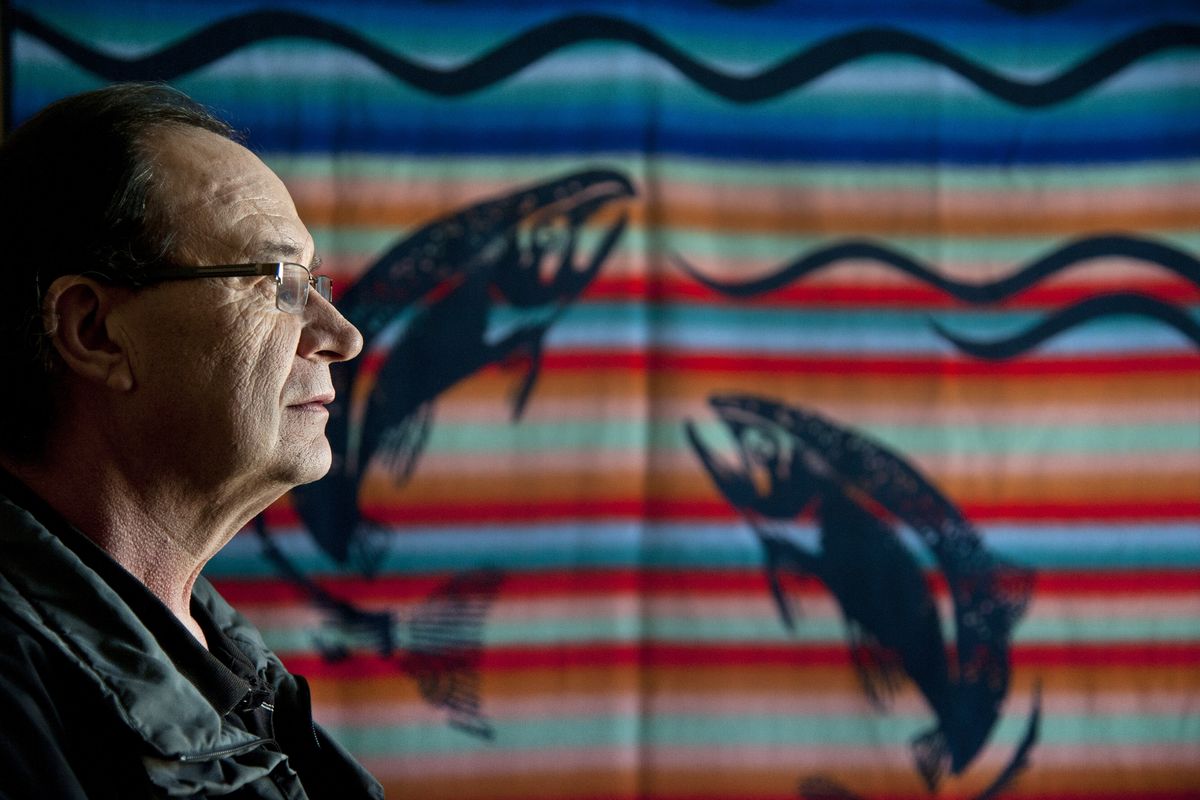Upper Columbia tribes seek to restore river’s salmon runs

For 75 years, tribes along the upper Columbia River have dreamed of restoring salmon above Grand Coulee Dam.
Now, they’re planning an initial study of what it would take to return spring chinook and sockeye runs to the 100-plus river miles between the dam and the U.S.-Canadian border.
“It’s a huge opportunity for us to correct the wrong that occurred when Grand Coulee was built in the 1930s without fish passage,” said D.R. Michel, executive director for the Upper Columbia United Tribes, which represents the Colville, Spokane, Coeur d’Alene, Kalispel and Kootenai tribes.
“Tribal members could once again practice their culture and their ceremonies,” he said, “and it would be a big economic venture for the region.”
Salmon migration to the upper Columbia and its Spokane, Kettle and Sanpoil river tributaries was blocked first by Grand Coulee, and later by Chief Joseph Dam, which was built downstream in the 1950s without fish ladders. The dams ended a 10,000-year-old Native American fishery on that reach of the Columbia.
Last week, the tribes presented their study proposal to the Northwest Power and Conservation Council in Portland, which is charged with mitigating for fish and wildlife impacts from the region’s federal hydropower dams.
The tribes will be taking comments on the proposal over the next 30 days to help refine the study’s scope. No funding has been allocated for the work, and getting broad regional consensus for the study would help it move forward.
There are many questions, including whether salmon could survive in the altered habitat above the dams.
“It’s a significant reach of the river,” said Phil Rockefeller, chairman of the power and conservation council. “There may be opportunities there, but we’ve never examined it carefully.”
The tribes are eager to release some test salmon, outfitted with radio tags, to see how they use the reservoirs and tributaries above the dams, Michel said. But that work may be several years down the line.
Tom Karier, the council’s Eastern Washington representative, anticipates a phased approach. First would be a look at existing studies, including efforts to get fish around or over other tall dams. A second phase would assess survival rates of test fish.
That research would have to confirm that salmon could thrive above the dams before a restoration effort would be seriously discussed, Karier said.
Getting fish over or around Grand Coulee also poses challenges. During its design, engineers abandoned efforts to include fish elevators and flumes after the dam’s height was raised to 550 feet.
Efforts to retrofit high dams for fish passage have been tried elsewhere, with limited success, said Bill Maslen, the Bonneville Power Administration’s fish and wildlife director. But there could be other options, including planting adult salmon in the reservoirs for tribal fishers to catch, he said.
The idea of self-sustaining salmon runs above Grand Coulee Dam is “a great vision and aspirational goal,” he said. But as a biologist, Maslen said he sees “significant challenges,” and supports a thoughtful, step-by-step approach to investigating the possibility.
Maslen said he looks forward to talking to the tribes in detail about their study proposal and also hearing from other stakeholders with an interest in the dams. Grand Coulee and Chief Joseph dams are the nation’s two largest hydropower producers. The reservoir behind Grand Coulee also irrigates Eastern Washington cropland.
And there’s another stakeholder: Canada. The proposal only addresses studying salmon reintroduction on the U.S. side of the border. But if that ever happened, some of the adult fish would stray into Canada in search of new spawning grounds.
That’s a potentially touchy issue as the two countries prepare to renegotiate the 1964 Columbia River Treaty, which governs the operation of the river for hydropower and flood control. In a recommendation to the U.S. State Department in 2013, BPA and the U.S. Army Corps of Engineers suggested that the two countries share the cost of investigating what it would take to get salmon back to Canadian spawning grounds. Canada wants those talks to occur outside of treaty negotiations.
“We need discussion with a lot of stakeholders, including Canada,” Maslen said.
The tribes are eager to see the studies more forward. Two or three generations have passed since their members fished for salmon on the Upper Columbia.
“It’s been 75 years since we’ve had fish,” said Matt Wynne, a member of the Spokane Tribe’s council. “I believe in my heart that (restoring salmon) is something that can help heal our tribes.”